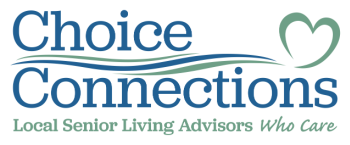What Documents Do I Need When Moving to Assisted Living?
If you are thinking about a move to senior housing, you may wonder how to prepare for the move. In last month’s Choice Voice one of the articles focused on what to bring. This article will outline some of the documents you will need as well as others you may want to have before a move to a senior living option like Assisted Living.
Advanced Planning
When it comes to advanced planning, the most common documents people have are:
- a power of attorney (POA) and
- advanced directives.
The two most common POA documents are for health care and financial. A health care power of attorney gives specific individuals authority to speak with health providers and make decisions on your behalf concerning your medical treatment, condition, or care.
The financial power of attorney (POA) gives one of more people the financial power to manage or make decisions regarding financial matters. This may include:
- Managing bank accounts
- Managing investments
- Managing financial affairs like paying bills
- Working with a long term care carrier
An advanced directive outlines what you would or would not want when it comes to medical treatment in case of an unknown medical emergency. This is sometimes called a living will.
Physician Order for Life Sustaining Treatment or POLST is a medical order that is created between you and your physician. It is universally recognized by first responders in a medical emergency. While not required, it is good to think about what you might want in a health crisis. For more information on the POLST see here.
Before a person moves into senior living it is a good idea to have these documents completed. The community will ask to have a copy for their file if available. This is to ensure that the managers know who to contact in case of an emergency. When it comes to legal matters, you should consult an attorney.
Senior Linkage Verification Number
The state of Minnesota wants you to know that you have options. The Senior LinkAge Line is there to help you compare those choices. Prior to signing a lease or contract, you need to call and decide if you want to hear about the different senior living scenerios. The staff will ask you some questions regarding your move. At the end of the call, you will receive a verification code that is unique to you. If you decide to move, you will share this code with staff at your new home. This code is good for life, so you will want to keep it in a safe place. To learn more, you can visit the website at mn.gov/senior-linkage-line/older-adults/housing/ or you can call 1-800-333-2433.
Senior Housing Documents
The senior living facility may require that you complete documents prior to moving into the apartment. Most commonly these will include:
- Application including a financial disclosure.
- Lease
- Care Plan or Service Plan
Application Process
Once you have decided to move to the senior living community the community will want to be sure you qualify financially to live there. In other words, they want to make sure you can pay your rent and any care costs. An application can simply be contact information and in other cases the senior living will perform a criminal background check and financial disclosure. Some communities also perform a credit check. They will want a copy of your identification and sometimes your social security number too.
Leasing Agreement
The lease document will outline the terms of your contract, the responsibilities of the community, tenant, and any additional legal requirements. You should read and understand this document before you sign it. The leasing manager will or should highlight some areas prior to signing with you, but they typically don’t take the time to go line by line.
When working as an executive director, I was surprised when people did not know or understand the terms written in an agreement that they signed. It is important to know expectations of you and the community before making a commitment. The lease is a legal document and however it is written, when you sign it, you agree to it.
Plan of Care
When a person moves into assisted living there are more documents because of care needs. Prior to the move, a nurse will perform a medical assessment to determine needs. The nurse then creates a plan of care or service plan specific to the individual with care. To move ahead with providing care to the person receiving care and the health staff at the facility agree on what is provided and sign the care plan. This living document can change over time and will always require someone to sign a new plan when changes are made.
The landscape of senior living is forever changing. As more and more rules and regulations come into play more documents and requirements will be necessary for a move.
The advisors at Choice Connections are here to help answer your questions. The team has over 100 collective years of experience working with seniors. You can learn more about the service we provide at www.choiceconnectionsmn.com

